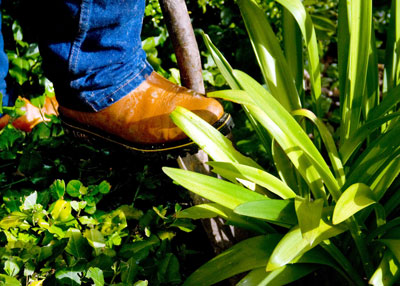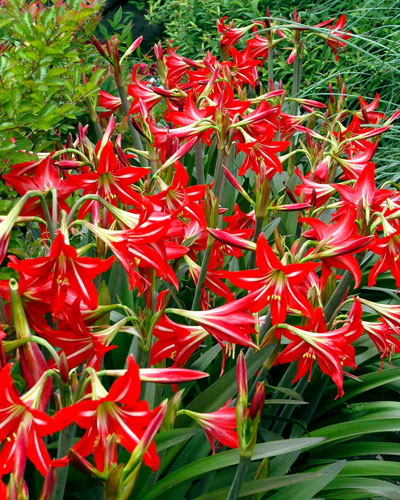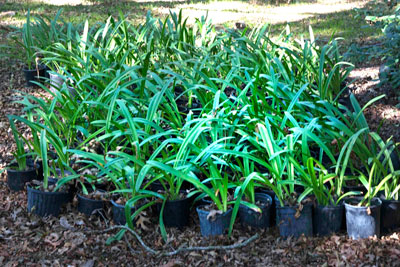From the Sperry Gardens: October 20, 2016

Photo: After perennials have formed thick clumps, they benefit from being dug and divided. Fall is the time for spring-blooming types such as this St. Joseph’s lily.
The old rule is that “if it blooms in the fall, you dig and divide it in spring, and if it blooms in the spring, you dig and divide it in fall.” That means “now” for plants like daylilies, iris, sweet violets, oxalis, thrift, candytuft, Shasta daisies, coneflowers and these St. Joseph’s lilies (hardy amaryllis).
All of these plants (and other spring-flowering perennials) establish strong roots over the winter so that they can spring out with vigorous new growth as the soil warms up in February and March. If you have any of these plants, and if they’ve begun to grow crowded, dig and divide them now before the first frost kills their tops back to the ground.

Photo: These iris in a commercial landscape are in great need of being dug, divided and replanted.
I use a small spading fork or nursery spade to lift my perennials. Most of my perennial gardens grow in soil that’s been heavily amended with organic matter and expanded shale, so I’m usually able to break the clumps of plants apart rather easily with my thumbs and the heels of my palms. In a few cases I have to use the blade of the spade to cut them in halves or quarters.
Once I have all the plants lifted and their beds emptied, I use a mini-tiller or the spading fork to work several inches of fresh organic matter (compost, rotted manure, sphagnum peat moss and finely ground pine bark mulch) and another inch of expanded shale back into the soil.
One of the big temptations when you’re replanting is to use every one of your transplants. If you’re putting them right back where they were growing before, you’re going to have them badly over-crowded. Either create a new and larger space for them, or give them to friends. Just don’t smash them back into the same space.
I normally trim off about half of the plants’ foliage. It’s going to die with the first frost anyway, and by trimming it, I reduce the amount of stress it will put on the roots as they try to regrow. I apply a high-nitrogen fertilizer, since most of my planting soils already have enough phosphorus, but if you’re gardening in a sandy soil, you could use a root-stimulator now and pick up the nitrogen come spring.
Finish by watering deeply. I usually top off my perennial beds with a lightweight winter mulch of tree leaves I’ve run through the lawn mower.

Photo: A part of the offspring of my first clump of St. Joseph’s lilies as they bloomed in the spring.
Our collection of St. Joseph’s lilies…
I believe I’ve told you about these plants before here. A good friend, now gone, brought me a nice clump of this plant to our old All Texas All Garden Show in Arlington probably 20 years ago. He knew I’d had a hard time finding it, and he was kind enough to split up his planting.
Hoping to grow a good many more, I dug and replanted ours several years ago. But some of the organic matter I used was a little too “fresh,” and the plants burned badly in the heat of their first couple of summers. So two months ago we dug and potted them, and this is how great they look now. I have several places where I’ll be planting them over the next couple of weeks, and they should perform handsomely as soon as next spring. Steve Wilson would be proud to see what I’ve done with his clump. I’ve going to pay his gift forward. I know several gardeners who will enjoy receiving them.

Photo: These are our plants ready for relocating into several parts of our gardens. They should be handsome come spring!
